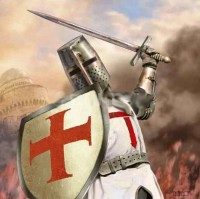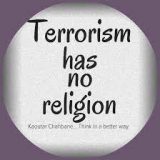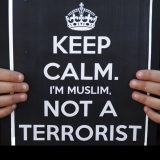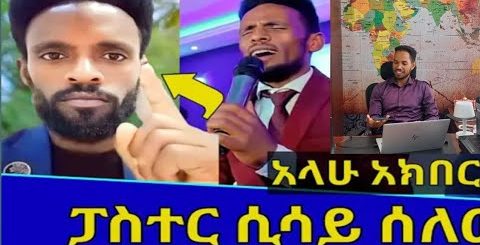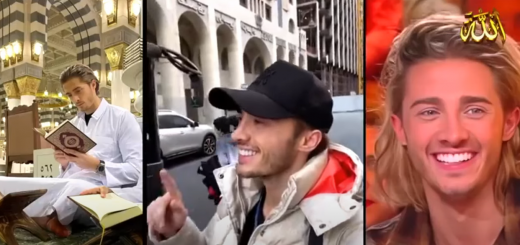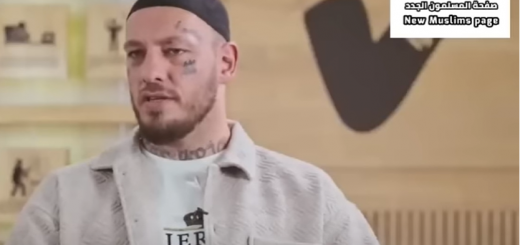On Pre-Islamic Poetry & The Qur’an
On Pre-Islamic Poetry & The Qur’an
Qasim Iqbal & M S M Saifullah
© Islamic Awareness, All Rights Reserved.
Last Modified: 9th September 1999
1. Introduction
It has been a source of faith and pride for Muslims over the centuries in that the Holy Qur’an is the preeminent word of the Almighty, inimitable in style and absolute in nature. This conviction is as strong for believers of today as it has been for believers of the past. As the tradition of truth is distinguished from falsehood, the authenticity of the Qur’an has been challenged today as it has been in the past. Though the petty points of criticism have changed over the years, the archetype has remained quite the same since the very beginning. Time and again, these issue has been put to rest, only to be exhumed by depraved charlatans.
One such issue regards the question of pre-Islamic poetry in the Arabian Peninsula. The pagan Arabs of the pre-Islamic period were a proud and boastful people who were characterized by epic tales, heart-rending poetry, and eloquent prose. Indeed, their literary excellence had intoxicated them with glaring arrogance and self-worship. And then, with the revelation of Prophet Muhammad(P) , the Arabs had found a contest for their genius – The Holy Qur’an. Suddenly, their pride had been undermined by something even greater than anything they could have ever dreamed of, a book that had never been matched in beauty, wisdom, and structure, and which has remained unchallenged right to the present day. For the Arabs, the question must have found it’s time; can a more powerful book exist other than the one whose pen belongs to the Almighty himself?
In the previous century, attempts were made to discredit the established power of the Holy Qur’an by suggesting that the Muslims fabricated the poetry of the pagan Arabs after the revelation of the Qur’an. Should this be the case, those madmen whose blood boils with hatred against Islam would find some consolation in the dishonour of the Qur’an, no matter how shallow, how weak. It had to be an Arab, Taha Husayn, who sensationalized these Orientalist ideas in Egypt, 1927. Husayn’s 15 minutes saw their end when his fabulous ideas were shattered by erudite Muslim scholarship.
Recently Husayn’s ideas have been given new life by the Internet marauder, “P. Newton”. Newton’s entire argument concerning the pre-Islamic poetry boils down to the paragraph which says:
So it is not only Taha Hussein who believed that the so called “pre-Islamic poetry” is a fabricated work, there are also some respectable contemporary scholars who think that there is something fishy about this so called pre-Islamic poetry.
In this paper, we intend to examine the authenticity of the pre-Islamic poetry of the Arabs in light of genuine, contemporary scholarship. Such an examination will provide the grounds on which to determine the worth of such pompous, missionary censure, such as:
…there are also some respectable contemporary scholars who think that there is something fishy about this so called pre-Islamic poetry.
Toby Lester, writing in an article in the Atlantic Monthly, claims in a rather authoritative manner that:
A determined modernist, [Taha] Hussein in the early 1920s devoted himself to the study of pre-Islamic Arabian poetry and ended up concluding that much of that body of work had been fabricated well after the establishment of Islam in order to lend outside support to Koranic mythology.
That academic dishonesty of both Newton[1] and Lester[2] already have been demonstrated in separate articles. One can only presuppose that in the spirit of deception, such arrogant and authoritative charges are made possible through the suppression of facts and selective argumentation.
2. The Consipiracy & Conspiracy-Mongerers
Taha Husayn published a sensational book called Fi’l-shi`r al-Jahili[3] (‘On Pre-Islamic Poetry’) in 1925. This book dealt with his revolutionary views on the nature of the Arabic poetry, which had been generally accepted in the Arab world as having flourished in the Arabian desert before the rise of Islam. The publication of this book provoked such a violent storm of protests that Taha Husayn felt obliged to withdraw it from the market. In Fi’l-adab al-Jahili[4] (‘On Pre-Islamic Literature’), which appeared two years later, he maintained the full vigor of his original argument but omitted certain passages that had aroused the previous Muslim sentiment. In brief, Taha Husayn’s theory maintained that pre-Islamic literature was a latter day forgery, based on a massive conspiracy involving political, religious, exegetical, professional, patriotic, and resistance motives.[5]
As far as both Newton and Lester are concerned, the buck stops here. It is only to be expected from these two personalities that their scholarship on such issues are completely bereft of any of the discussions that followed Taha Husayn’s publications. When we proceed further, we discover that Husayn’s material was anything but convincing for his critics. Quite the opposite, his flimsy evidence and slapdash reasoning evoked a flood of articles and weighty volumes that deconstructed his arguments and reinstated the authenticity of the pre-Islamic poetry that had been the pride of the Arabs for so many centuries. It is our intention to examine the debate that followed the publication of Fi’l-adab al-Jahili (1927) to the present, those decades of discussion that have been curiously avoided by mischief-makers Newton and Lester. Ironically, it is during this period that Husayn’s theories were rejected by both Orientalists and Muslims.
It must be added that the theories advanced by Taha Husayn were by no means a novelty as far as Europe was concerned. In the same year that Taha Husayn published his Fi’l-shicr al-Jahili (1925), it so happened that Professor David Margoliouth of the University of Oxford published in the Journal Of The Royal Asiatic Society a paper entitled “The Origins Of Arabic Poetry”[6], in which he expressed identical views supported largely by identical reasons. However, Margoliouth had recognized that he was not the first person to cast serious doubt on the authenticity of ‘pre-Islamic’ literature. W Ahlwardt and Sir C Lyall had already done so before. For he states:
The subject of this paper was treated by Ahlwardt in a monograph called Bemerkungen über die Aechtheit der alten arabischen Gedichte, Greifwald, 1872, and by Sir C Lyall in the preface to vol. ii of his Mufaddaliyyat. The former is not very confident, and calls attention to some of the matters which have been discussed rather more fully below; Sir C Lyall deals chiefly with the character of the transmitters, which he rates rather more highly than the present writer.[7]
Poetry in Arabic falls into sixteen different al-Bihar, viz., at-Tawil, al-Bassit, al-Wafir, al-Kamil, ar-Rajs, al-Khafif, al-Hazaj, al-Muttakarib, al-Munsarih, al-Muktatab, al-Muktadarak, al-Madid, al-Mujtath, al-Ramel, al-Khabab and as-Saria’. In addition, we have the speech of soothsayers, rhyming prose, and normal speech. The Qur’an’s structure did not fit into any of these categories. It was this distinction that made the Qur’an inimitable, and left the pagan Arabs at a loss as to how they might counter it. Ibn Ishaq recorded the reaction of one of the most fervent opponents of the Prophet(P), al-Walid bin Mugira:
They said, “He is a kahin.” He said, “By God, he is not that, for we have seen the kahins, and his (speech) is not unintelligible murmuring (zamzama) and rhymed prose (sajc) of a kahin.” “Then he is possessed (majnun),” they said. “No, he is not that,” he said. “We have seen and known the possessed state, and here is no choking, spasmodic movements, and whispering.” “Then he is a poet,” they said. “He is not that,” he replied. “We have known poetry in all its forms and meters, and this is not poetry.” “Then he is a sorcerer,” they said. “No, he is not that,” he said, “for we have seen sorcerers and their sorcery, and here is no spitting and no knots.”[8]
Thus the following consideration can be raised: the Qur’an bore no sharp resemblance, either in structure or content, to the poetry composed among the pre-Islamic Arabs as we know it. This seems to have been well recognized by the discerning auditors of the Prophet’s(P) time as well. Thus, the pagan Arabs were armed with one of their most potent weapons against the Prophet(P); one which drew down an emphatic Qur’anic denunciation and a profound differentiation between the two sources of mantic inspiration, the God and the jinn and demons of the poets and kahins. And so, as Margoliouth wrote about 75 years ago.
If by poetry the same be meant as in the later literature, we are confronted with a slight puzzle: Mohammad, who was not acquainted with the art [of poetry], was aware that his revelations were not in verse; whereas the Meccans, who presumably knew the art of poetry when they heard or saw it, thought they were. We should have expected the converse.[9]
Margoliouth resolved this “slight puzzle” by advancing his (in)famous theory that the poems we know of as pre-Islamic were actual forgeries of a later Islamic period, being largely
…. a development of the styles found in the Qur’an.[10]
His theory is based on the verses of the Qur’an 26:224-227, which addresses poets and the nature of the conflict between Muhammad(P) and the poets.
3. The Refutation
Margoliouth’s theory is based upon often-specious, not to mention dishonest, argumentation and can no longer be regarded as tenable, as has been noted by Professor A.J. Arberry of Cambridge University as well as others. For Arberry states:
The sophistry – I hesitate to say dishonesty – of certain of Professor Margoliouth’s arguments is only too apparent, quite unworthy of a man who was undoubtedly one of the greatest erudites of his generation.[11]
Irfan Shahid echoes a similar opinion:
Perhaps the most unsuccessful attempt at interpreting these verses [26:224-227] was that of D S Margoliouth in his article on The Origins Of Arabic Poetry, in JRAS (1925).[12] His exegetic effort was not only unsuccessful, but was also disastrous, in that it formed one of the bases upon which he rested his case against the authenticity of pre-Islamic poetry. His conclusions have, of late, been subjected to a searching criticism by Professor A J Arberry and have probably been swept away beyond recall.[13]
It must be admitted that the arguments forwarded by Margoliouth and Taha Husayn make up an impressive case against the authenticity of the pre-Islamic poetry. Upon examining their arguments one by one, Margoliouth and Taha Husayn’s view no longer hold water. Arberry also states:
It can be conceded readily enough that the foregoing arguments make up an impressive case against the authenticity of the pre-Islamic poetry; it is only when the reasons advanced are examined one by one that their combined weight comes to appear less than at first encounter. To enumerate the points in rebuttal or mitigation made on the Arab side by writers such as Muhammad Farid Wajdi, Muhammad Lutfi Jumca, Muhammad Sadiq al-Rafi’i, Muhammad Ahmad al-Ghamrawi and Muhammad al-Khidri, and on the European side by E Bräunlich, T Andrae, G von Grunebaum, F Gabrieli and R Blachère would expand this brief epilogue into the dimensions of a full-length dissertation.[14]
It is also important to note that both the Orientalists as well as the Muslims have advanced the refutations against the theories of Margoliouth and Taha Husayn. Again, these are indisputable facts of monumental significance for which Newton and Lester remain conspicuously mute. From the above analyses, it has become clear that they pursued the course of academic dishonesty.
Professor Michael Zwettler notes:
For, though the critics from Abu cAmr b. al-cAla’ and Ibn Sallam al-Jumahi to Ahlwardt, Margoliouth, and Taha Husayn have cast doubt both on the reliability of many transmitters of the ancient poetry, their criticisms have generally failed to consider certain important facts that have since been brought out in a decisive fashion. One may, I think, grant that these doubts, at least in their extreme form as expressed by Margoliouth, and Taha Husayn, have been laid to rest through the efforts of later scholars.[15]
In the language of the idiot, no one submits to the fabulous conspiracy theories of Margoliouth and Husayn, save that they submit to the falsification of facts and the depravity of reasoning.
One is also tempted to cite the “final argument” against the theories of Margoliouth and Taha Husayn, as adduced by H A R Gibb:
it would be as impossible to ‘reconstruct’ the poetry of Jahiliya from the poetry of the Umayyad period as it would be to ‘reconstruct’ Elizabethan from Caroline drama.[16]
Since we have discarded the theories of both Margoliouth and Taha Husayn on pre-Islamic poetry, may we ask what the modern day view is regarding the poetry and its transmission? Zwettler says:
The poetry of Arabs, in the ages which preceded the rise of Islamism, was perpetuated by oral tradition; for in ancient times, when writing was not used or scarcely used, memory was exercised and strengthened to a degree now almost unknown. In those countries of Arabia where Arabian poetry may be justly considered to have had its origin or to have attained its earliest growth, there lived reciters, or Rawis, as the Arabs called them, who got by heart numerous songs of their poets, and recited them, occasionally, in public assemblies and private parties… This impression, in essence, has been shared by a great majority of medieval and modern scholars who have dealt to any degree with Arabic poetry.[17]
4. Conclusion
It is clear in light of the above discussion that the fabulous theories of David Margoliouth and Taha Husayn, which declare the poetry of the pagan Arabs to be a latter day forgery by the Muslims, have been refuted by both Orientalists and Muslims. Certain arguments have found special grounds for vigorous criticism.
One can see the seductive appeal in fabulous conspiracy theories that can seemingly explain almost any phenomenon, as has been demonstrated by Toby Lester and his Christian counterpart, P. Newton.
Real conspiracies, however, are rare since they are virtually impossible to organize on such a massive scale. Both Newton and Lester remain, not too surprisingly, in utter silence about the embarassing criticisms of their theories. This is to be expected as their writings are dedicated as fodder for the ignorant.
And Allah knows best!
| Islamic Awareness |
References
[1] See the article: Pseudo-Callisthenes, Dhul-Qarnain & Alexander The Great
[2] See the article: Nevo & Negev Inscriptions: The Use & Abuse Of The Evidence
[3] Taha Husayn, Fi’l-shi`r al-Jahili, 1925, Dar al-Ma`arif, Cairo.
[4] Taha Husayn, Fi’l-adab al-Jahili, 1927(?), Dar al-Ma`arif, Cairo.
[5] A. J. Arberry, The Seven Odes: The First Chapter In Arabic Literature, 1957, Allen & Unwin: London, pp. 236-237.
[6] D. Margoliouth, “The Origins Of Arabic Poetry“, Journal Of The Royal Asiatic Society, 1925, pp. 417-449.
[7] Ibid., p. 417 (See footnote).
[8] A. Guillaume (Trans.), The Life Of Muhammad: A Translation Of Ibn Ishaq’s Sirat Rasul Allah, 1957, Oxford University Press, Pakistan Branch, p. 121. The quote is the adapted version.
[9] D. Margoliouth, “The Origins Of Arabic Poetry“, Op. Cit., p. 418.
[10] Ibid., p. 446.
[11] A. J. Arberry, The Seven Odes: The First Chapter In Arabic Literature, Op. Cit., p. 238.
[12] See Margoliouth’s article in reference 4.
[13] I. Shahid’s article, “A Contribution To Koranic Exegesis” in G. Makdisi (Ed.) Arabic And Islamic Studies In Honor Of Hamilton A. R. Gibb, Cambridge (Mass.): Department of Near Eastern Languages and Literatures, Harvard University, 1965, p. 564.
[14] A. J. Arberry, The Seven Odes: The First Chapter In Arabic Literature, Op. Cit., p. 238.
[15] M. Zwettler, The Oral Tradition Of Classical Arabic Poetry: Its Character & Implications, 1978, Ohio State University Press (Columbus), p. 12.
[16] See I. Shahid’s article, “A Contribution To Koranic Exegesis” in G. Makdisi (Ed.) Arabic And Islamic Studies In Honor Of Hamilton A R Gibb, Op. Cit., p. 564. Also in Michael Zwettler’s, The Oral Tradition Of Classical Arabic Poetry: Its Character & Implications, Ibid., p. 159.
[17] M. Zwettler, The Oral Tradition Of Classical Arabic Poetry: Its Character & Implications, Ibid., p. 14.
Number of View :2206






